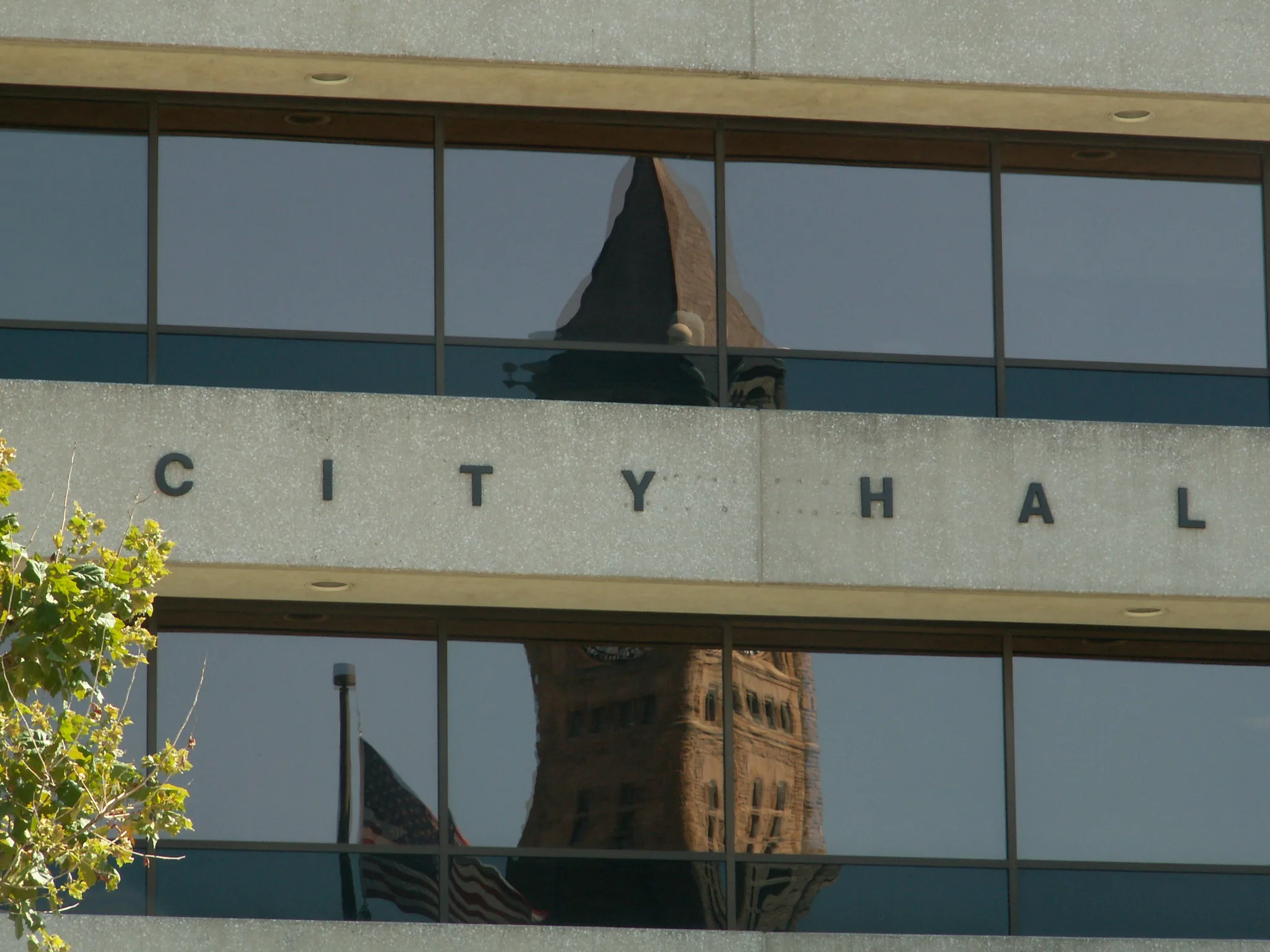New York City is home to an estimated 641,000 people of Chinese descent, and many of them live in three of the city’s major Chinese enclaves: the renowned Chinatown in Manhattan, Sunset Park in Brooklyn, and Flushing in Queens. In these neighborhoods, you’ll find many of the estimated 2,166 Chinese food establishments, and many more that identify as Asian or fusion cuisines. There’s no doubt that Chinese restaurants are a staple of the city’s economy. They provide opportunities for many Chinese immigrants to survive and thrive in the city. They also offer a home away from home for Chinese immigrants while connecting Chinese Americans with their cultural roots.
Also Read: Chinese Immigrants Share Best Restaurants in NYC for Authentic Taste of Home
As an organization dedicated to serving immigrants, Documented sought to discover the most beloved restaurants among Chinese immigrants in New York. These are not generally the takeout establishments, where General Tso‘s chicken is popular with the American palate. Instead, our respondents’ recommendations include luxurious banquet venues, fast-food noodle chains, intriguing hot pot establishments, enduring Cantonese gems nestled within Chinatown’s historical alleys, and numerous small eateries near Chinese communities.
The common threads binding these selections are authentic flavor and affordability — factors that resonate most among our respondents. Among the 51 restaurants they chose, we’ve ventured into four different kinds of Chinese restaurants in Brooklyn, Manhattan, and Queens to capture their New York stories.
Chongqing Laozao
37-04 Prince St., Flushing, Queens








Renowned for its Chongqing-style hot pot, Chongqing Laozao is one of New York’s most sought-after Chinese eateries. Laozao means old stove in English. Traditionally designed for communal sharing, the hot pot experience involves a simmering pot of broth placed at the center of the table, where diners cook a variety of raw ingredients, such as thinly sliced meats, seafood, vegetables, and noodles, by dipping them into the bubbling broth using small utensils. It creates a cozy atmosphere as a group gathers around the pot, engaging in conversation while enjoying the fun of cooking one’s own food.
Chongqing-style hot pot is distinct from other types of hot pot due to its intense spiciness and bold flavors. Chongqing, the largest municipality in southwest China, prides itself on its passionate embrace of “la (spiciness, 辣)” and “ma(tingly,麻)”, two flavors that combine to create the city’s signature culinary identity known throughout China.
According to folklore, the cuisine’s origins trace back to the humble dining habits of boatmen and laborers on the banks of the Jialing River in Chongqing in the late Ming and early Qing Dynasties. The main ingredients included beef tripe, ox aorta, and duck intestines which are most accessible to the boatmen. True to its roots, authentic Chongqing hot pot boasts complex flavors and intense spiciness that the boatmen favored.
Stepping inside Chongqing Laozao is akin to stepping back in time. The restaurant is separated from the outside world by a heavy wooden door with a brass ring handle. Upon entry, the fragrance of Szechuan peppers, peppercorns, and beef tallow enters your nose, transporting patrons to a quaint farmhouse reminiscent of the 1940s or 1950s China. Wait staff wear uniforms inspired by those of rural laborers of the era. A small waterwheel and a miniature cottage illuminated by red and yellow lanterns serve as a bucolic contrast to the bustling Flushing streetscape.
Chongqing Laozao opened in 2019 to fill a gap in this regional style of hot pot, according to a manager who did not want to share his name. He said crowd favorites include crispy fried pork, glutinous rice cake embellished with brown sugar syrup, and milky beef — a marinated, high-quality beef with a tender, springy texture.
“It is so spicy and satisfying dining at Chongqing Laozao, I feel I am addicted to it!” said one of our survey respondents.
In fact, Chongqing Laozao accommodates non-spicy and vegetarian preferences for their soup base.
The restaurant secured a spot on the New York Times’ Best 100 Restaurants list this year, which has made it even harder to get a table at this already popular establishment. If you go, prepare to queue!
Royal Queen
136-20 Roosevelt Ave, Flushing, Queens



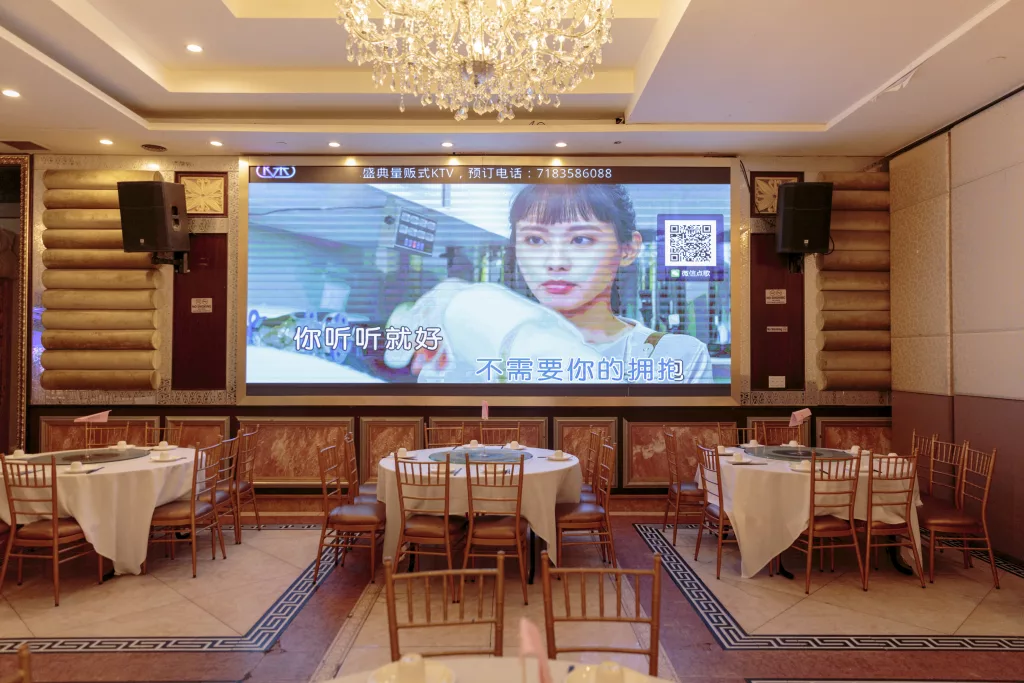


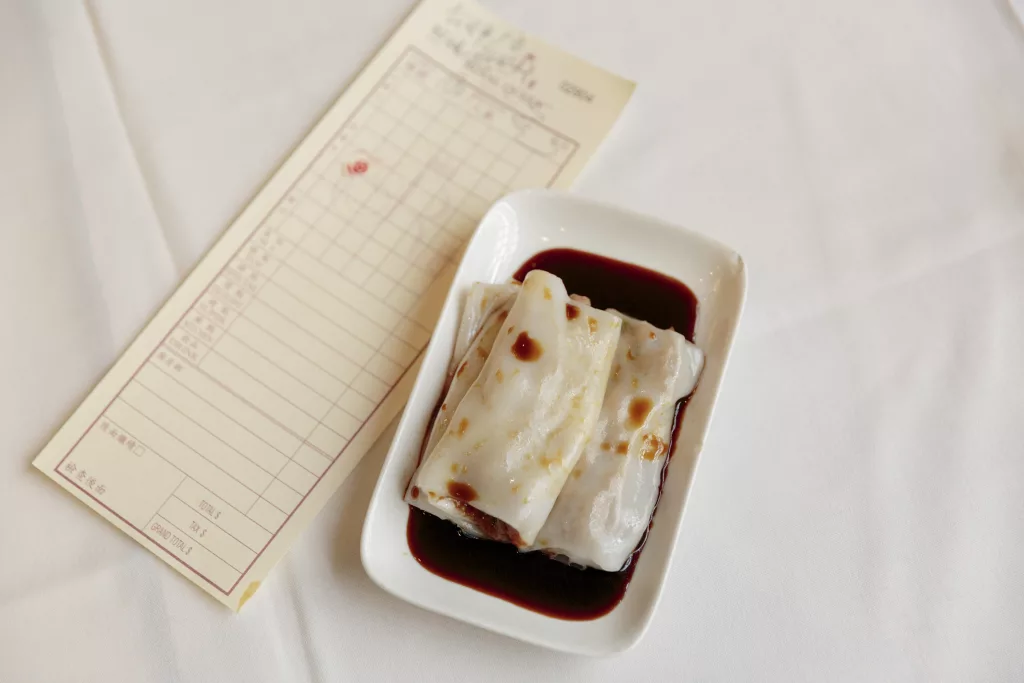

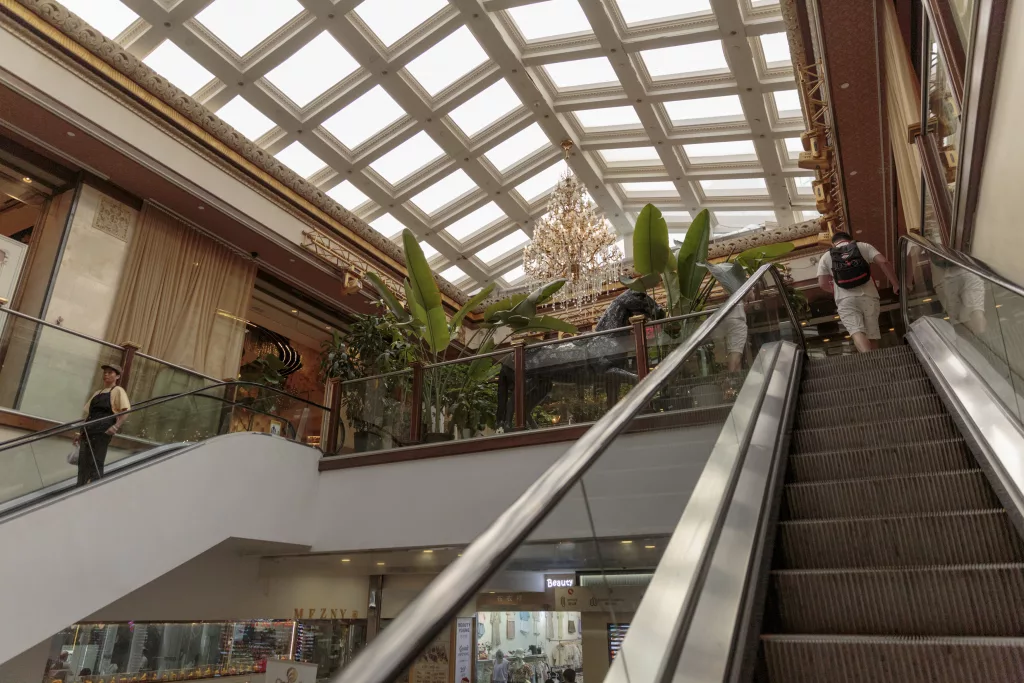

This could be NYC’s largest Chinese restaurant if not one of the largest in the United States. It’s famous for its dim sum and Cantonese fusion-style food, and is a destination for Chinese community organization celebrations, as well as elected officials.
Owner Connie Zhang told Documented that Royal Queen has a staff of some 200 workers and can accommodate up to 1,400 patrons (the largest table can accommodate 30 guests). In addition to its banquet hall, the restaurant has 25 karaoke rooms and 10 private rooms offering a special menu and other services. It can host up to two weddings a day.
Upon ascending the escalator from New World Mall in Flushing to the third floor, you will be greeted by the luxurious interior of the Royal Queen. Crystal chandeliers hang above, large screens play karaoke, and lush floral arrangements decorate the walls. In line with its name, Royal Queen presents an interpretation of a European court, incorporating elements of Chinese banquets.
As an immigrant who grew up in China and moved to the U.S. when she was 12, Zhang was immersed in the restaurant industry and worked in family-owned eateries during her youth. She opened her first restaurant at the age of 21. After relocating to New York in 2005, Zhang established Royal Queen in 2011.
“It’s hard to find a big space like this, especially in the middle of Flushing. A banquet hall is hard to keep. It’s an incredible amount of work,” said Zhang.
Like many restaurants, the pandemic dealt a heavy blow to Royal Queen. Zhang recounted the challenges in an interview with QNS, detailing how the restaurant faced a dire Spring Festival in early 2020, with over 1,000 tables canceled in what is traditionally the busiest time of the year for Chinese restaurants.
As the pandemic’s grip loosens, Royal Queen’s popularity is resurging. Weekend visits reveal a lively scene of hundreds enjoying Cantonese Dim Sum-style brunch. Trolleys laden with crystal shrimp dumplings, rice rolls, and an array of dim sum dishes smoothly navigate between tables, allowing diners to choose their desired dishes. In the evenings, the restaurant transforms into a hub for grand weddings and banquets, where guests enjoy Cantonese fusion-style delicacies, including seafood and stir-fried vegetables.
Dunhuang
13 locations in New York, New Jersey, and California
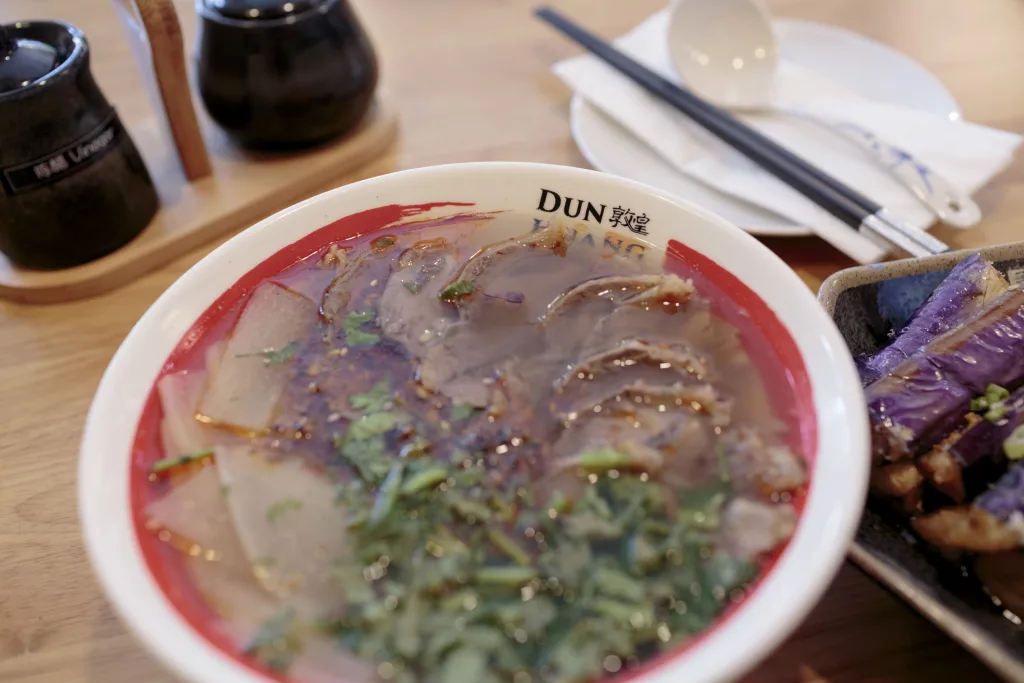





This noodle shop specializes in Northwestern Chinese cuisine and features the signature Lanzhou beef noodle dish. Originating from Lanzhou, the capital city of China’s northwestern province Gansu, this hand-pulled noodle creation carries the influence of the local Chinese Muslim population, contributing to the cuisine style of the province.
Despite its seemingly straightforward nature, the Lanzhou beef noodle dish is a showcase of intricate details. It follows a golden standard called “one clear, two white, three red, four green and five yellow” (一清二白三红四绿五黄), which means the noodle dish should encompass five essential elements: a clear radish beef broth, thinly sliced white radish, a touch of red chili oil, garnished with green onion and cilantro, and noodles with a subtle yellow hue.
The hallmark of traditional Lanzhou freshly made hand-pulled noodles lies in their versatility. The menu offers a diverse range of eight noodle types, with widths as thin as a strand of hair to as wide as a belt.
The noodle shop opened its doors in 2015 in Flushing before expanding to its 13 locations nationwide. Our recent visit took us to the newly-opened branch at 8421 20th Avenue in Bensonhurst — a burgeoning “little Chinatown” in Brooklyn.
The restaurant boasts a contemporary Chinese aesthetic. A wooden screen divides the entrance from the dining area. Chinese ink paintings adorn the walls. Light fixtures inspired by paper lanterns hang from the ceiling.
Dunhuang features more than its signature Lanzhou beef noodle dish in all of its locations. Restaurant manager Janet Yang said they also offer pita burgers, lamb chops, steak, and the flavorful big plate chicken. Their eggplant salad, featuring fried eggplant, garlic and vinegar, is a delightful choice for veggie lovers, as confirmed by our vegetarian photographer!
Cafe Hong Kong
51 Bayard St., Manhattan
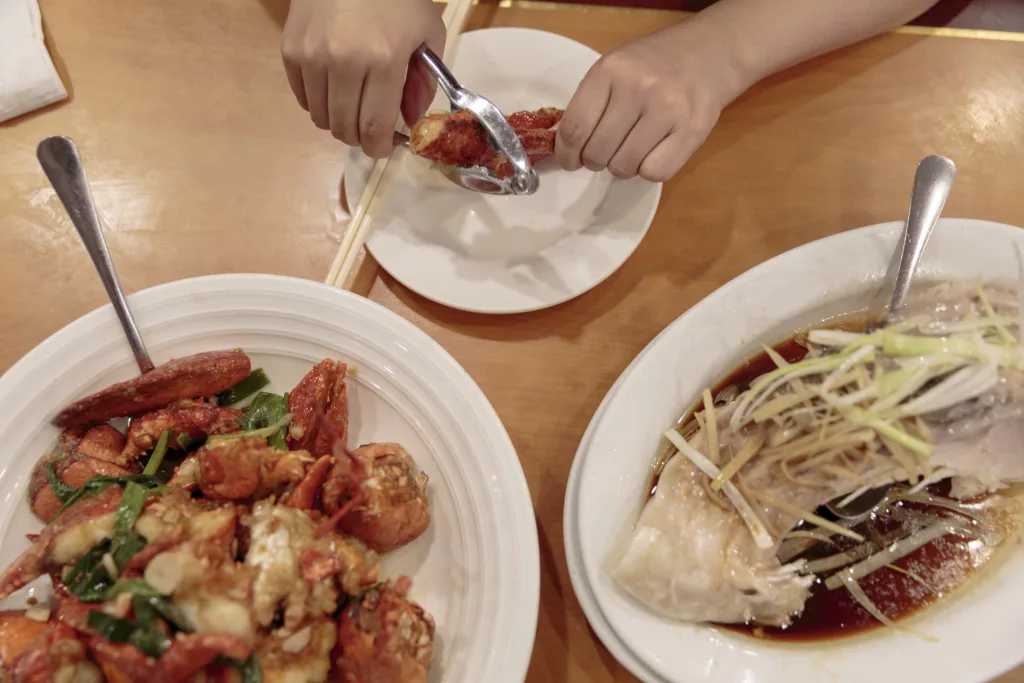


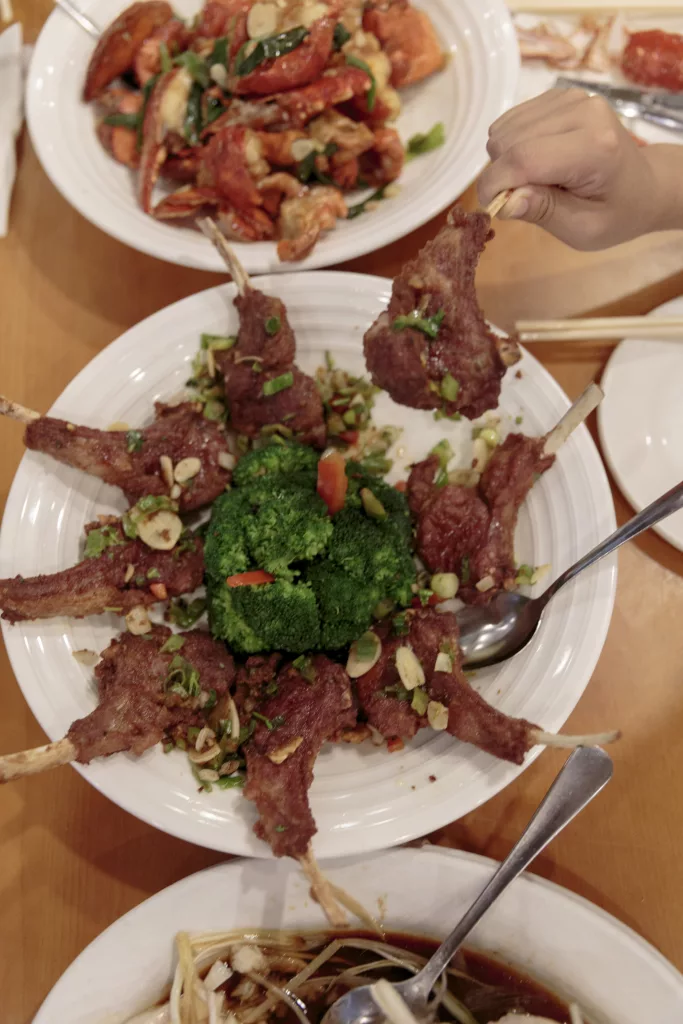
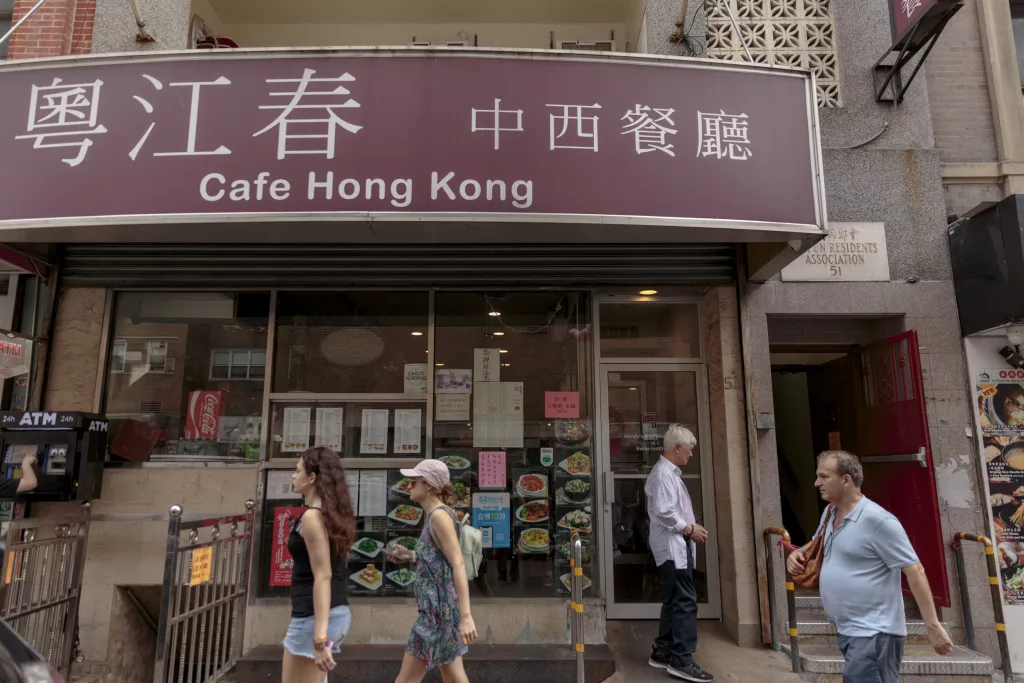
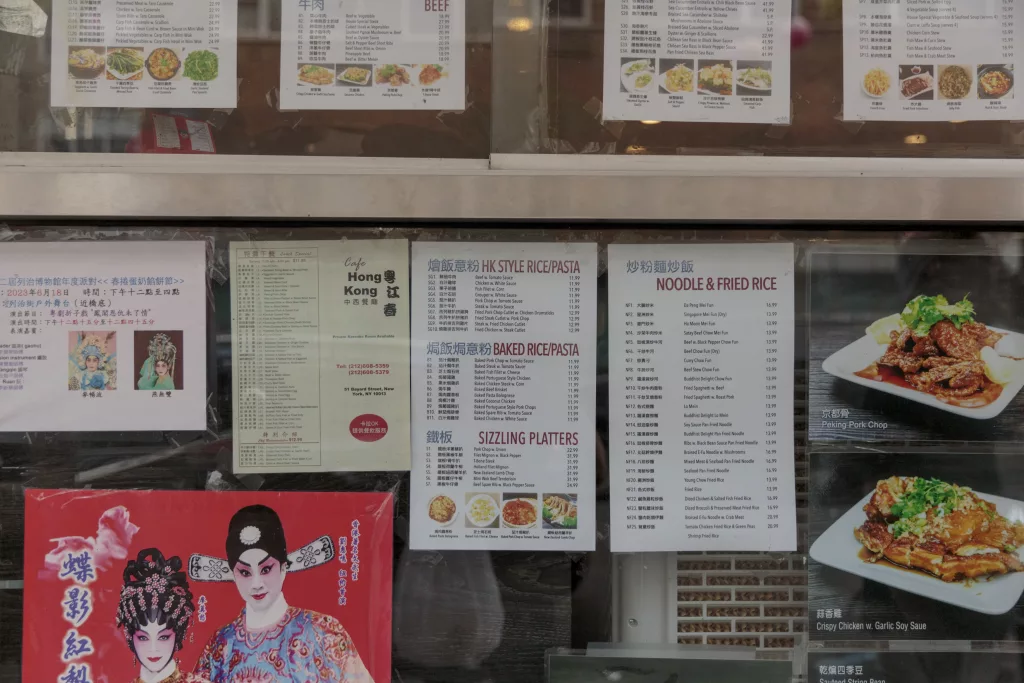


Recommended by three Chinese immigrants we surveyed in Brooklyn, this Manhattan Chinatown restaurant shows the lasting appeal of Cantonese cuisine, which is characterized by fresh ingredients, delicate flavors, and a diverse range of cooking techniques. Cafe Hong Kong has been in business for about 3 decades and is frequented by many individuals from Cantonese regions in Southern China.
The cozy restaurant accommodates around 50 guests. On the Saturday afternoon when we visited, it was filled with Cantonese chatter. A big group seated at a round table in the corner engaged in conversation while turning the rotating tray to pass the food amongst themselves.
The restaurant’s culinary stars include lamb chops with scallions, lobster with ginger and scallion, and diced chicken with eggplant and salted fish casserole. The most popular dish, steamed buffalo carp fish, boasts a juicy tenderness complemented by finely sliced green onions, a spoonful of seasoned soy sauce, and a ladle of piping hot oil. The tempting sound of sizzling as the oil is poured onto the fish marks the grand finale in the preparation of this signature dish.
An accomplished Hong Kong chef opened Cafe Hong Kong on Elizabeth Street in the 1990s to bring authentic Cantonese fare to local patrons. The restaurant eventually found its home at 51 Bayard Street a decade ago after transitioning to its current ownership.
Mike Wu, the manager of Cafe Hong Kong, said the restaurant has cultivated a loyal following among Chinese immigrants. “Some people in this neighborhood come to the restaurant every day and order the same dishes for several years,” beamed Wu.
These four restaurants are just a few representatives of thousands of Chinese restaurants in NYC. Check out our full guide here and let us know your favorite!






